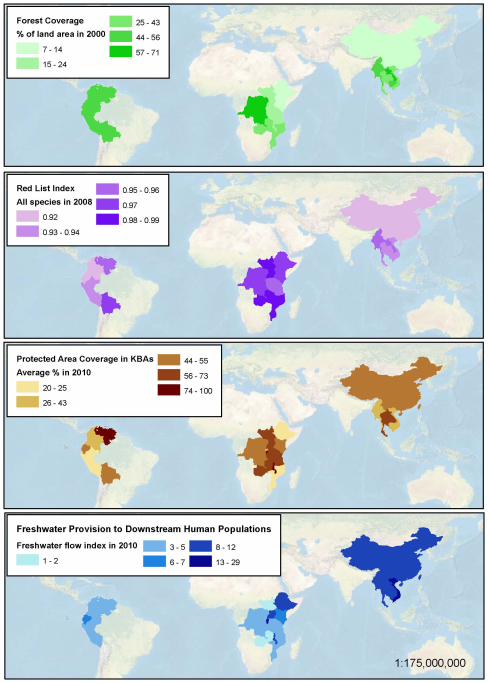 In response to mounting threats to the diversity of all life on earth, the world's governments committed in 2010 to the Convention on Biological Diversity's Aichi Targets for halting the loss of biodiversity. As with all conservation programs, the Aichi Targets require close monitoring in order to gauge progress toward specific goals. However, policy-makers, managers, and scientists too often lack access to information on biodiversity trends that is comprehensive, easily understood, and defined at appropriate spatial scales.
In response to mounting threats to the diversity of all life on earth, the world's governments committed in 2010 to the Convention on Biological Diversity's Aichi Targets for halting the loss of biodiversity. As with all conservation programs, the Aichi Targets require close monitoring in order to gauge progress toward specific goals. However, policy-makers, managers, and scientists too often lack access to information on biodiversity trends that is comprehensive, easily understood, and defined at appropriate spatial scales.
To begin to address this need, NatureServe has created a Biodiversity Indicators Dashboard that enables users to track four indicators of biodiversity and conservation performance data in a clear, user-friendly format. The four indicators measure:
- Pressure on biodiversity (deforestation rate)
- State of species (the IUCN Red List Index)
- Conservation response (Key Biodiversity Areas)
- Benefits to human populations (freshwater provision)
With maps and graphics, the Dashboard analyzes three regions—the tropical Andes, the Great Lakes of Africa, and the Mekong River Valley—and their component countries. These visualizations include charts that show regional and national trends in biodiversity. This new tool helps track progress toward the Aichi Targets, supports national monitoring and reporting, and informs outcome-based policy-making that protects natural resources.
Click here to explore our web-enabled, interactive Biodiversity Indicators Dashboard.